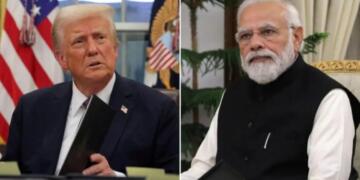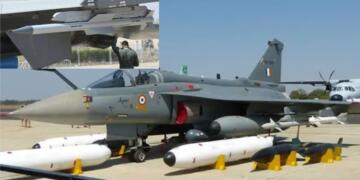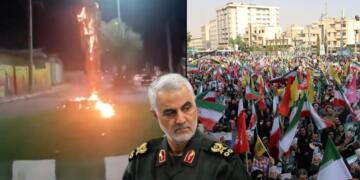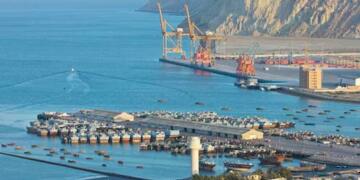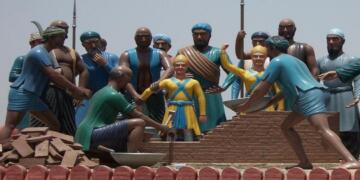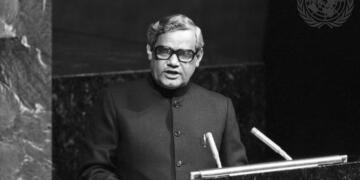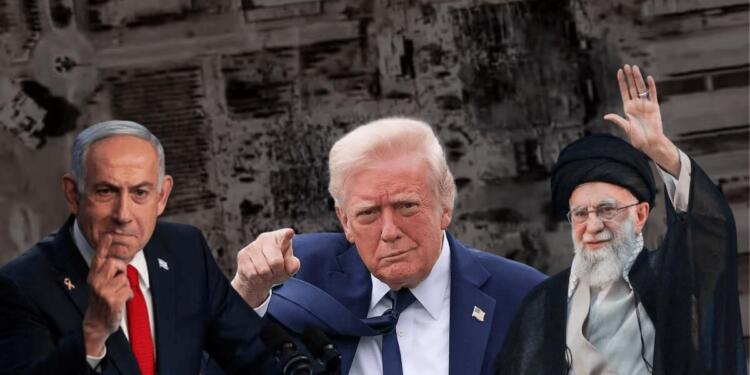When Hamas launched a devastating surprise attack on October 7, 2023, killing over 1,200 Israelis and taking hundreds hostage, Israel faced what many called its worst day in modern history. For a moment, the world watched with shock, expecting Israel to strike back. But what followed wasn’t just a military response. It was a full-scale transformation, brutal, unapologetic, and strategically precise.
Less than two years later, Israel has not only crippled Hamas, but also taken the fight to Hezbollah, reasserted itself in Syria, pulled the U.S. deeper into a conflict with Iran, and reminded the region — and the world — that it’s a nation that will not go down quietly.
This isn’t just a war story. It’s a story of national will, strategic clarity, and cold political calculation. And for countries like India, watching closely, there’s a lot to learn.
Gaza: The Relentless Campaign Against Hamas
After October 7, Israel made its objective clear: dismantle Hamas. Not contain it. Not pressure it diplomatically. But remove it entirely.
What followed was an unrelenting military campaign. Israeli airstrikes, ground operations, and targeted killings have decimated Hamas’ leadership, destroyed its tunnel networks, and severely damaged its ability to operate. Entire parts of Gaza now lie in ruins. The humanitarian toll has been massive, and controversial, but Israel hasn’t backed down.
Its message to Hamas and other enemies is brutal but unmistakable: we may suffer, but we will never be weak.
Hezbollah and Lebanon: Preempting the Next War
Israel didn’t stop at Gaza. Hezbollah, based in southern Lebanon and backed by Iran, has long been a bigger threat with more advanced weaponry. Instead of waiting for a second front to open, Israel took the fight to them.
Airstrikes targeted Hezbollah’s command posts and weapons stores. Key leaders were taken out. Israeli troops pushed into Lebanese territory to create buffer zones, reminiscent of previous conflicts, but this time with more surgical precision.
Israel is effectively saying: we’re not here to react anymore — we’re here to prevent.
Syria and the Golan: Quietly Reclaiming the Skies
In Syria, Israel ramped up its long-running campaign to push back Iranian influence. Strikes on Iranian weapons convoys, military bases, and even Syrian regime sites have picked up dramatically.
And in the Golan Heights, already under Israeli control, there’s been a quiet expansion of presence and influence — securing one of Israel’s most strategically important frontiers.
Iran’s foothold in Syria is now far less secure than it was just a year ago.
The U.S. Enters the Fight: Iran Faces Fire
In May 2025, something many thought unlikely finally happened, the United States struck Iran nuclear facilities directly.
After a series of attacks by Iranian-backed militias on U.S. forces in Iraq and the Gulf, Washington launched airstrikes on Iranian military facilities, drone factories, and key IRGC bases. It was a clear escalation.
And Israel was quietly behind much of the pressure. Israeli intelligence and diplomacy helped push the U.S. to act, marking a rare shift from silent partnership to joint military pressure.
What had long been a shadow war with Iran has now come into the open. And Israel, once again, is at the center of it.
Israel’s Strategy: Fast, Focused, and Unforgiving
Looking at this past year, Israel’s approach has been crystal clear:
Strike fast when attacked.
Hit harder than the enemy expects.
Ignore the noise of global outrage when your survival is at stake.
Use alliances, especially with the U.S., to your advantage.
Act before you’re cornered — not after.
It’s not diplomacy-first. It’s survival-first. And while the world debates the morality of Israel’s choices, few can deny their effectiveness.
India’s Takeaway: Watch Closely, Learn Quickly
India, facing its own threats, from Pakistan-sponsored terror to tensions with China, should be paying attention. Not to copy Israel, but to study what decisive statecraft looks like.
Don’t Wait to Be Hit Again: Israel didn’t wait for another Hamas attack. It preempted the next one. India, especially along the LoC or LAC, might need to rethink its wait-and-watch strategy.
Make Intelligence Actionable: Israel doesn’t just gather intelligence, it acts on it. India needs better integration between its intelligence and military response mechanisms.
Build Political Unity in a Crisis: Israel’s political class put aside differences when the nation was attacked. In India, national security often becomes just another political talking point.
Control the Global Narrative: Israel has faced global criticism, but it’s stuck to its story: self-defense. India needs to better shape international opinion, especially on Kashmir and counterterrorism.
Strengthen Key Partnerships: When it mattered, Israel activated its alliance with the U.S. India must be willing to do the same — with the U.S., France, Australia — not just for trade, but for security.
Decide What You Stand For: Israel made it clear, national survival comes before everything. India, often torn between restraint and reaction, needs similar clarity.
Israel’s Comeback Is About More Than War
Israel didn’t just bounce back. It came back with purpose. With a clear goal. With brutal determination.
Yes, the cost has been high in lives, in criticism, in instability. But for Israel, the alternative was worse: looking weak, waiting for the next attack, living in fear.
The big question is: if India ever faces a moment like Israel did on October 7 will it respond with the same clarity, speed, and strength?
Because in this new world, waiting too long to respond might cost more than acting too soon.





